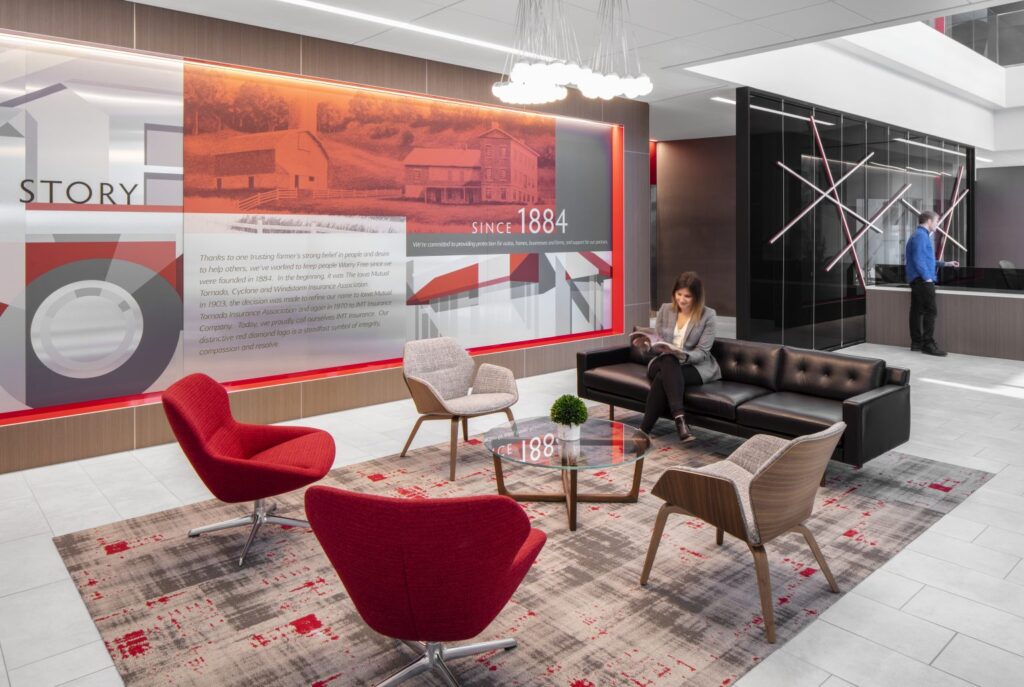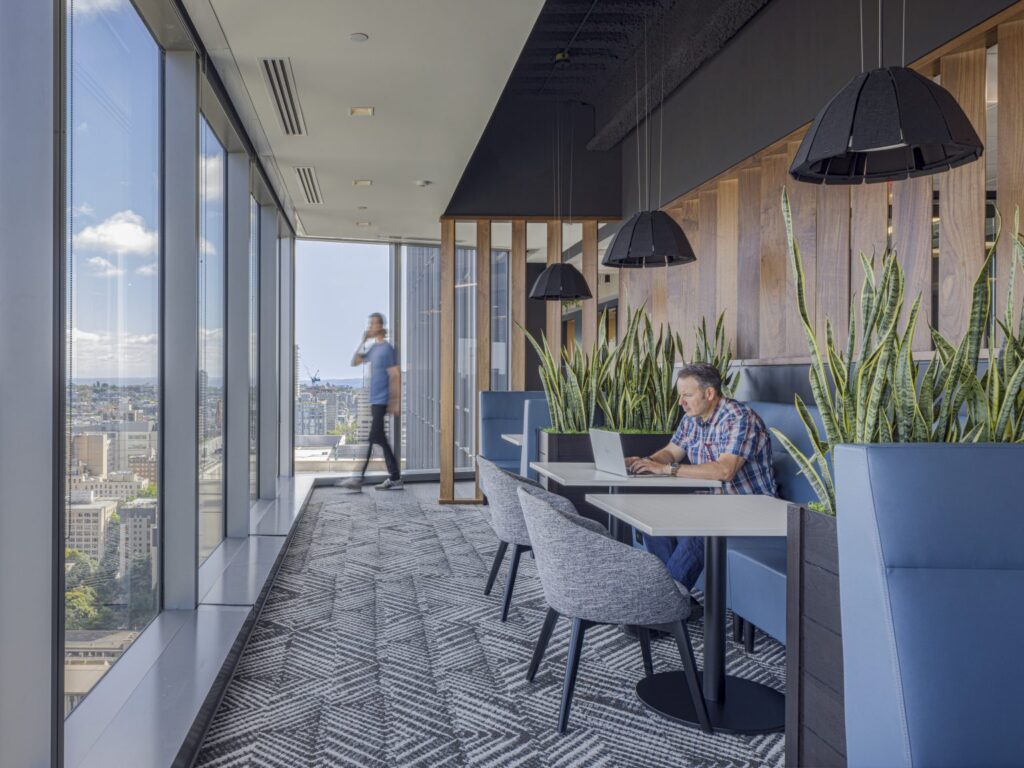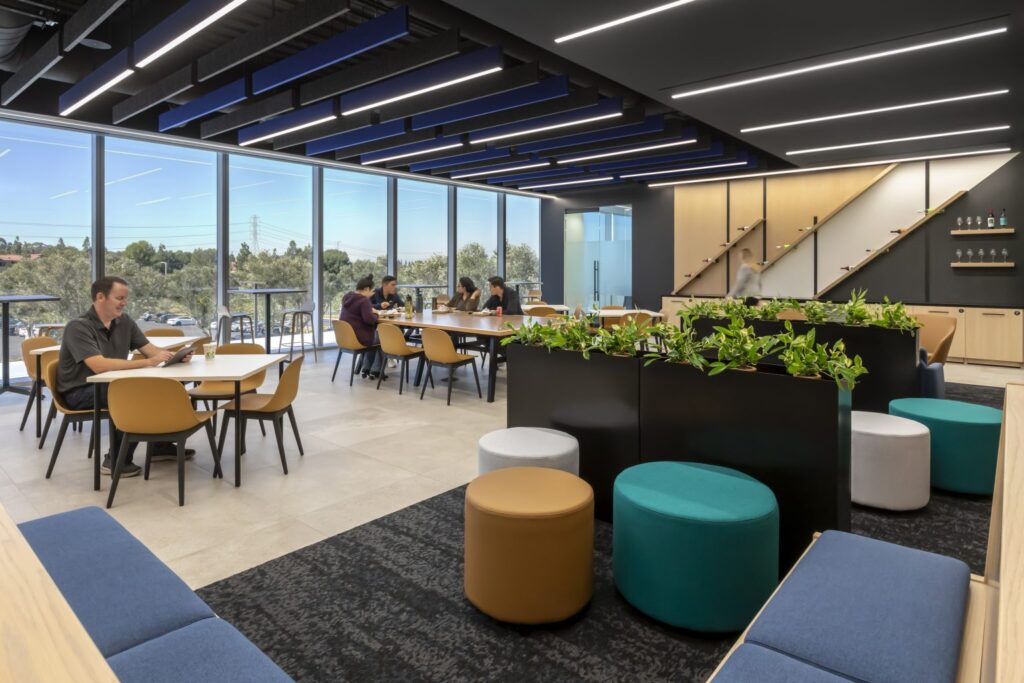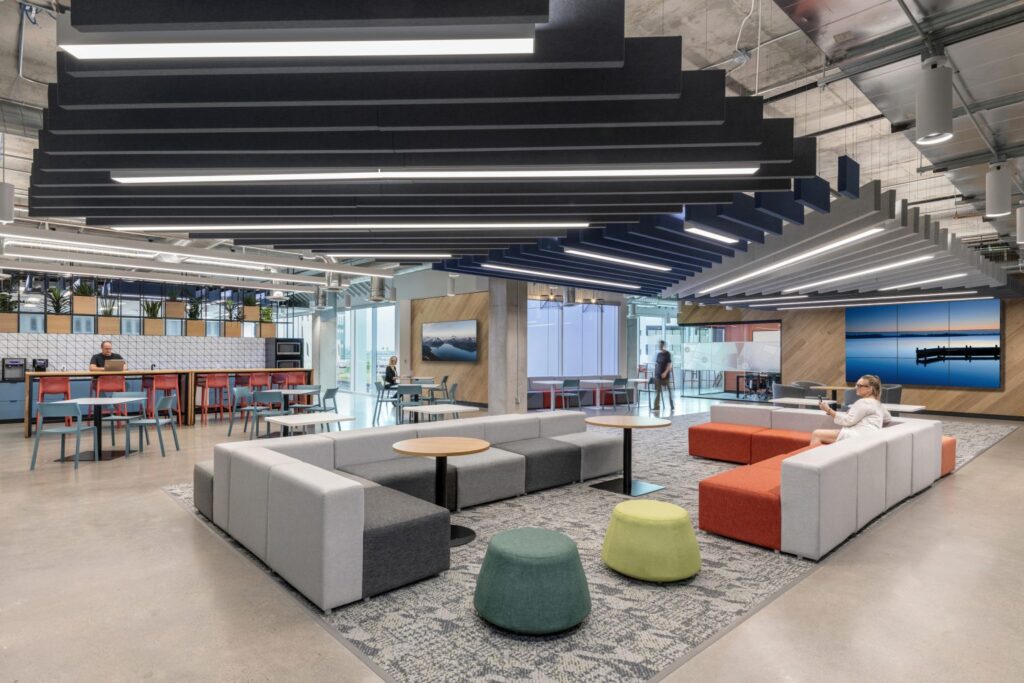- To attract diverse generations in the workplace, businesses should focus on universal human aspirations like purpose and belonging, essential for engagement and recommending the organization as a great place to work.
- Effective learning and mentoring require physical proximity; remote work can limit these, especially for junior employees, leading to reduced feedback and learning opportunities which impacts organizational competitiveness.
- Employees prioritize work-life balance and value autonomy and flexibility; hybrid work can boost productivity and well-being, but in-person work fosters irreplaceable social connections and network growth vital for creativity and innovation.
This article was written by Shive-Hattery’s Michelle Jones for Work Design Magazine.
Much is written about design for specific generations — millennials, Gen Z and Gen Alpha. The workplace may have up to five generations of talent for the foreseeable future. With every dimension of employee diversity increasing, it’s essential to consider universal human aspirations that bind us together.
With 40% of United States employees working from home (at least one day a week), this can be a challenge. A July 2023 Stanford study, The Evolution of Working from Home, shows the sweet spot of hybrid work with essential in-office experiences. A workplace strategy harmonized with the following human aspirations will make the commute worthwhile for all employees.

Purpose
A sense of belonging is about connection to an organization’s culture. To learn “how we do things around here” needs in-person proximity. Especially for onboarding new employees, osmosis plays an important role in helping others observe “what it means to work here.”
Recent Gallup research quantifies the importance of organizational culture. Employees who “strongly agree that they feel connected to their culture” are more than three times as likely to be engaged at work and more than five times as likely “to recommend their organization as a great place to work.”
Thoughtfully designed workplaces bring people together to ease communication and increase non-transactional interactions. Gallup research shows “connected employees” are 37% more likely to be thriving. They are 68% less likely to feel burned out at work and 55% less likely to be looking for a job.
Mentoring & Collaboration
Progressive organizations leverage digital learning with a mix of collaborative, in-person learning. Mentoring in the workplace makes it easier to ask “just-in-time” questions rather than scheduling a video meeting or phone call.
A Pew survey noted that 36% of respondents claimed teleworking reduced their opportunities for mentorship. The Stanford study on the Evolution of Working from Home noted this specific example:
Emmanuel, Harrington and Pallais (2023) study mentoring practices and team relations at a large software firm that had some teams housed together in the same building and split across two buildings. Pre-pandemic, employees housed in the same building as their teammates received 21% more comments on their code from coworkers than those housed in a different building. These comments are suggestions and ideas on how to improve their code and play an important role improving employee performance and learning. At the start of the pandemic, all employees were sent home to work fully remote. These building location differences rapidly disappeared, but all team members now received almost 50% fewer comments than those housed in the same building pre-pandemic. The drop in feedback was largest for junior employees, showing how remote work can impede learning for this group.

Autonomy Through Choice
A 2021 study by JLL — Four Foundational Truths — found that 59% of workers say work-life balance is their top priority in a job — ahead of pay. This includes increasing demand for flexibility (88%) along with more well-being and ergonomic support.
Vibrant workplaces offer a compelling array of options with autonomy of choice. An activity-based workplace gives individuals the freedom to choose the type of space that allows them to be most effective for the task at hand. You “build your day” rather than anchor activities to a fixed location. The activity-based workplace should be agile, fluid, and adaptable over time.
The silver lining of hybrid workplaces is the infusion of freedom and flexibility that can be a slight boost to productivity. The Stanford study states, “Hybrid working, in turn, appears to have small positive impacts on productivity, coming from two sources. First, hybrid workers save about two or three hours each week from less commuting, and some of that time goes into more hours in their current job. Second, hybrid workers appear to be more productive on their home days because of fewer distractions and quieter home working conditions.”

Collegiality & Networking
A 2021 study of 60,000 Microsoft work-from-home staff published in Nature Human Behavior shows the headwinds of fully remote work:
Email and messaging traffic reveal that the move to fully remote led employee-to-employee communication networks to become more static as workers were less likely to create new connections. In-person work can lead serendipitous meetings with colleagues in meetings, the break room or at the proverbial watercooler, generating more connections. While working remotely, these kinds of interactions are less common, so fewer new connections are created, and social networks become more static.
Beyond serendipity, next-level workplaces curate experiences to build collegiality. Intentionally designed spaces set the stage for unique collaboration and networking. Humans are social beings with a need for connection and a growing network of relationships. Creativity, innovation, and the spark of a new idea are more likely with a mix of in-person collaboration.

Experience (spaces, technology, tools not at home)
The need for workplaces with gravitational pull in a hybrid world is driving a “flight to quality,” Class A office space. Over 60% of the office vacancies are concentrated in 10% of buildings, according to JLL’s 2023 research. Amenity-rich buildings are attracting workers and investors alike. Bland Class B and C office space without upgrades from a home office environment will continue to struggle.
Competitive workplaces infuse technology and tools not available at home. Beautiful spaces that promote wellbeing and human connection will naturally draw people together. The unplanned conversation, a new idea that helps a client and the spark of a new life-long relationship happen when we gather with passionate people, on fire for the mission of an organization.


 Dr. Gleb Tsipursky – The Office Whisperer
Dr. Gleb Tsipursky – The Office Whisperer Nirit Cohen – WorkFutures
Nirit Cohen – WorkFutures Angela Howard – Culture Expert
Angela Howard – Culture Expert Drew Jones – Design & Innovation
Drew Jones – Design & Innovation Jonathan Price – CRE & Flex Expert
Jonathan Price – CRE & Flex Expert













